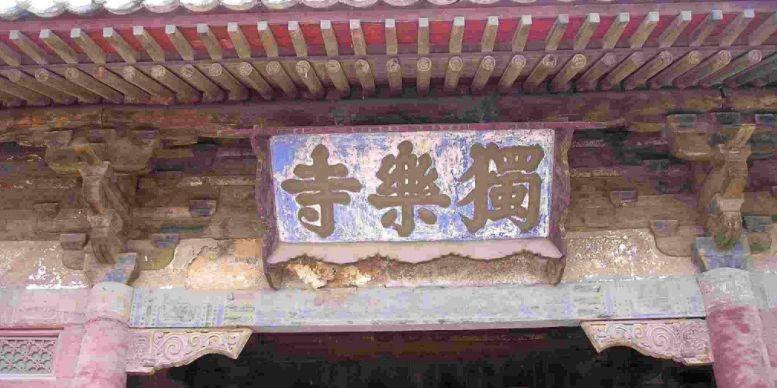Four hundred and eighty temples in the south, how many buildings in the smoke and rain. ——Du Mu, "Jiangnan Spring"

preface
Buddhism was introduced to the mainland very early, and Buddhism flourished during the Southern and Northern Dynasties, and Buddha statues were built for worship in successive dynasties. Many Buddha statues are built in different periods, so the craftsmanship used is different, these Buddha statues now seem to be a symbol of the wisdom of the working people, each Buddha statue is a rare cultural relic.
Luohan statue in a cave in Yi County, Hebei Province
The Arhat was one of the sixteen practitioners who were around Shakyamuni. The eighteen arhats that people now speak of evolved on the basis of the original sixteen arhats. Sixteen arhat statues were once enshrined in the cave of The Eight Buddhas in Yixian County, Hebei Province, and these arhat statues were very well-made, and the glaze on the arhats was uniform and brightly colored, which was a difficult "three-color" craft.
However, these Arhat statues were seriously damaged in 1912, when due to social unrest, some ordinary people in Yi County at that time started the idea of these Arhat statues in caves. At that time, many foreigners were very interested in China's cultural relics and did not hesitate to buy them at high prices, which is why the villagers in YiXian County sold these "three-colored" Arhats for profit.
A German bought 8 Statues of Rohan
One day in 1912, a German "sinologist" Bercyski wandered around the city of Beijing, looking like an ordinary foreign tourist. But Bercyski was purposeful, he was very interested in antiquities, and immediately walked in after seeing the antiquities shop. There was no one in the shop at the time, and Bercyski was attracted by a "three-colored" arhat statue in the antiquities store.
At that time, Belchsky did not hesitate to buy the statue of Arhat, but the owner told Bercysky that the statue had been sold to a Japanese customer. Although the Luohan statue already had a buyer, Belchsky did not spare it, and the antique shop owner also knew that such a guest could not be offended, so he told Belchsky that he could go to Yi County, Hebei Province, to see that the Luohan statue was collected there.
Listening to the owner of the antique shop, Belcicsky also rushed to Yi County, Hebei Province, not far from Beijing, and found the cave to enter only to find that the Buddha statue here had been emptied. Belcysky was not discouraged, spending money around Yi County to inquire about the statue of Luohan. Soon after finding the clues to these Arhat statues, and after finding the antiquities dealer who sold these Arhat statues, Bercysky spent a lot of money to buy the Luohan statues in 8 holes.
The "Liao Sancai" Luohan statue has been lost overseas
After Bercyski bought the Luohan statues, he also shipped these Luohan statues overseas, and these "sancai" luohan statues were initially mistaken by foreigners as "Tang Sancai". In fact, these "three colored" Luohan statues from the caves in Yixian County, Hebei Province are "Liao Sancai", at that time there was no large kiln factory in Hebei that could produce this "Tang Sancai", but instead a kiln factory of the Liao Dynasty was discovered around 1985, and some of the Buddha statues found were very similar to the Luohan statues in the caves in Yixian County in glaze color and craftsmanship.
These "Liao Sancai" Luohan statues are still collected in foreign museums, and it is understood that four "Liao Sancai" Luohan statues are collected in the United States, and the remaining four Luohan statues are in museums in France, Germany, Japan and Canada. Once because of people's ignorance led to the loss of a large number of cultural relics overseas, every time I think of this matter, people feel sad, I hope that there will never be a similar incident in the future.
【Image source from the network, if there is infringement, please contact to delete】